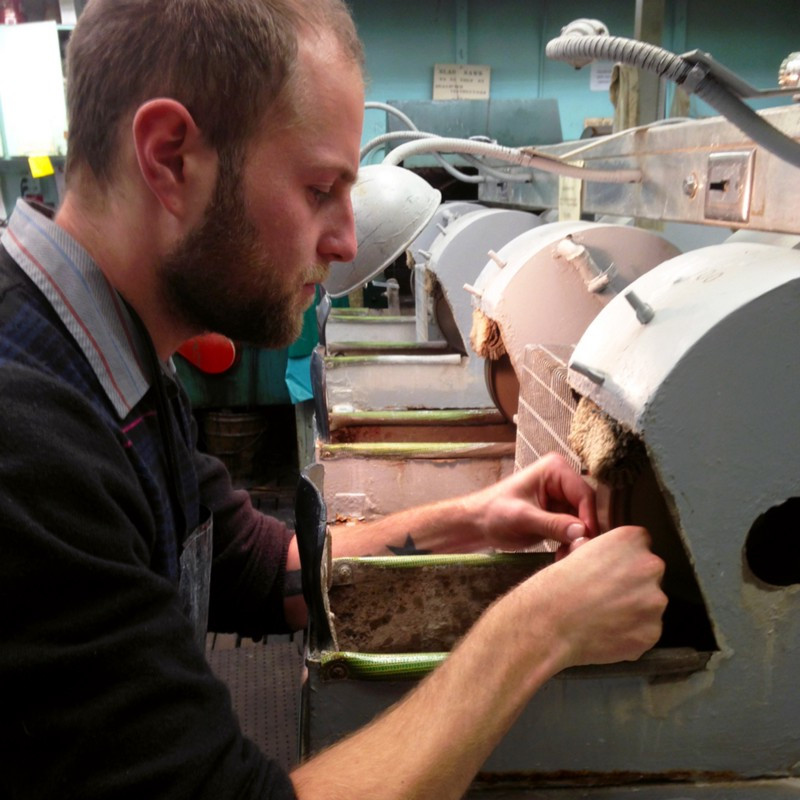
发布时间23rd Oct 2020
修改于4th Jun 2025
重新切割宝石以获取利润
 宝石交易协会 (Institute Of Gem Trading)的 Justin Prim 撰写了这篇关于“重新切割宝石以获取利润”的文章。本文讲述了他在泰国创办一所以这一原则为中心的宝石学校的思考和经验。
宝石交易协会 (Institute Of Gem Trading)的 Justin Prim 撰写了这篇关于“重新切割宝石以获取利润”的文章。本文讲述了他在泰国创办一所以这一原则为中心的宝石学校的思考和经验。
过去几年在曼谷教授和切割宝石的过程中,我开始专注于宝石二次切割,并将其作为我商业模式的一部分。由于人们对宝石切工质量的认识不断提高,对切工精良的宝石的需求不断增长,不仅在欧美市场,在亚洲也同样如此。我看到曼谷的常客们特别要求切割精良的宝石。由于曼谷拥有大量的商业级切工宝石,以及世界各地众多的贸易展会,二次切割服务在宝石行业中形成了独特的市场地位。
重新切割的艺术
重新切割的艺术并非胆小者能掌握。它需要经验丰富的眼光和熟练的切割技巧。客户首先会问你:“你会减掉多少重量?” 如果你没有足够的切割经验来回答这个问题,那就不要接这份工作。重新切割需要大量的练习才能掌握技巧,了解重新切割过程中出现的各种问题,并在数十次甚至数百次重新切割的过程中了解最终的克拉产量。 
学习重新切割宝石
基础技能是可以学习的。作为宝石交易学院“宝石商业切割与再切割”课程的一部分,我们将教您如何以简单、系统的方式进行再切割。首先,您需要将切割后的宝石以正确的方向放置在切工工具上,以最大程度地减少宝石的重量损失。然而,在进行实际切割之前,您需要制定一个计划。这正是经验的用武之地。当您观察切割后的宝石时,您需要能够识别切割给宝石带来的问题,以及是否有可能以合理的方式解决这些问题。这是我们在课程中教授的另一项技能。如果宝石属于客户,他们通常会对自己想要的改变有所想法……也许他们想关闭一个窗口,调整比例,将形状改为更赏心悦目的形状,或者改变刻面图案以增强光线和色彩的透射。进行再切割的原因有很多,但很多时候,再切割并不划算。

重新切割总是涉及大量的数学计算,因为你需要了解宝石在重新切割前的价值,以及为了修复宝石问题而损失10%到50%的重量后的价值。如果你不了解这些数字,就不要接客户的工作。先在便宜的宝石上练习一下,了解重新抛光、关闭窗口、触摸腰棱时宝石会损失多少重量。如果你不能(相当肯定地)告诉客户,你可以将问题修复到原始重量的一定百分比以内,那么你就不能负责任地接受客户的宝石。
正如我所说,重新切割并非胆小者之举。如果您只照着图表切割过,那么在重新切割之前,最好先练习一下不看图表的情况。重新切割没有图表。您需要能够判断原始刻面角度,并弄清楚如何调整它们以获得更佳的比例。您需要知道如何在切割过程中调整角度。原始切割可能一开始就不对称,因此您必须处理不同角度的不同刻面。根据宝石的价值,并非总是能够将宝石周围的所有角度切割成相同的角度。您需要能够随机应变,并在切割过程中进行调整。这也是乐趣的一部分。
最终结果
不过,我必须承认,重新切磨最棒的部分在于完成宝石后,将你的作品与原始切磨效果进行比较。没有什么能比得上这种感觉。从原石上切磨绝对不会给你同样的感受,因为你永远无法确切知道一颗宝石的潜力,至少在它被预先加工好之前。通过重新切磨,你可以清楚地看到原石在切磨师手中的潜力,然后你可以通过自己的双手和技艺看到提升后的潜力。作为一名艺术家,这种感觉很棒,而当你出售宝石并意识到它的价值上涨时,这种感觉会更加强烈,尽管它的克拉重量减少了。 
关于作者
Justin K Prim是一位美国宝石学家,现居泰国曼谷,从事宝石切割工作。他研究过世界各地的宝石切割传统,并参加过 GIA 和 AIGS 的宝石学课程。他目前正在撰写一本关于全球宝石刻面历史的书籍。他目前担任宝石交易协会 (Institute of Gem Trading)的宝石切割讲师,并撰写文章、制作视频,并举办有关宝石切割历史的讲座。
购买宝石
搜索Gemstone Encyclopedia
最新的文章
棕榈象牙雕刻,又称植物象牙,是象牙的天然替代品,取自南美洲棕榈树(Phytelephas palm)的果实,并以符合伦理的方式采集。本指南将带您全面了解棕榈象牙!
15th Jan 2026
彩虹格纹日光石是一种长石,由于内部含有各种包裹体,呈现出三种绚丽的光学效应。它绚丽多彩的光泽和格纹图案使其成为收藏家梦寐以求的珍宝!
12th Jan 2026
文章分类
How To's is where you will find helpful articles from gem Rock Auctions on how to cut gemstones, select gemstones and buy gemstones.
9文章数




